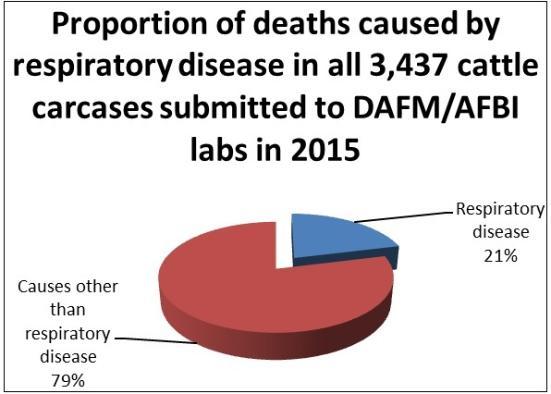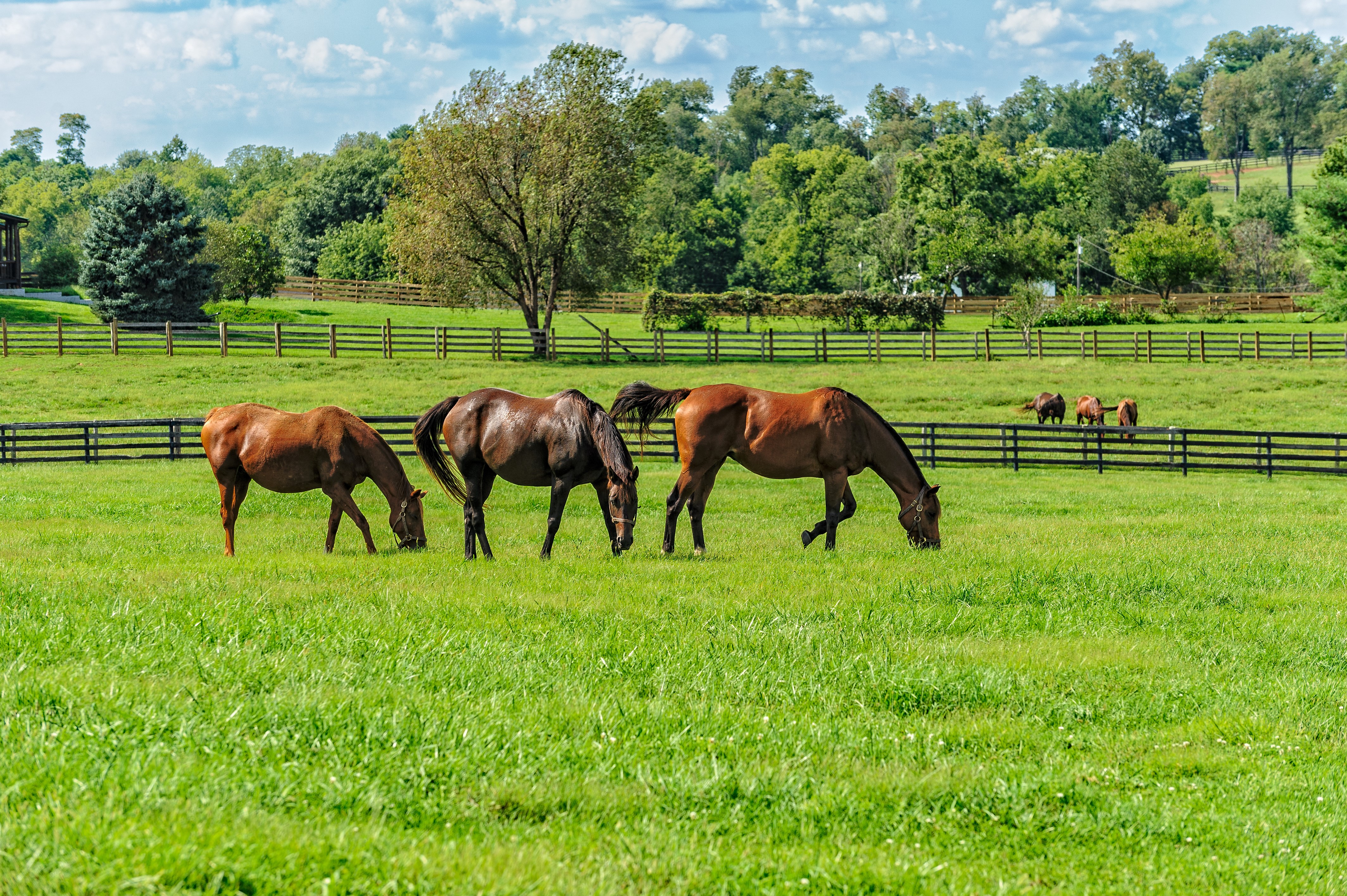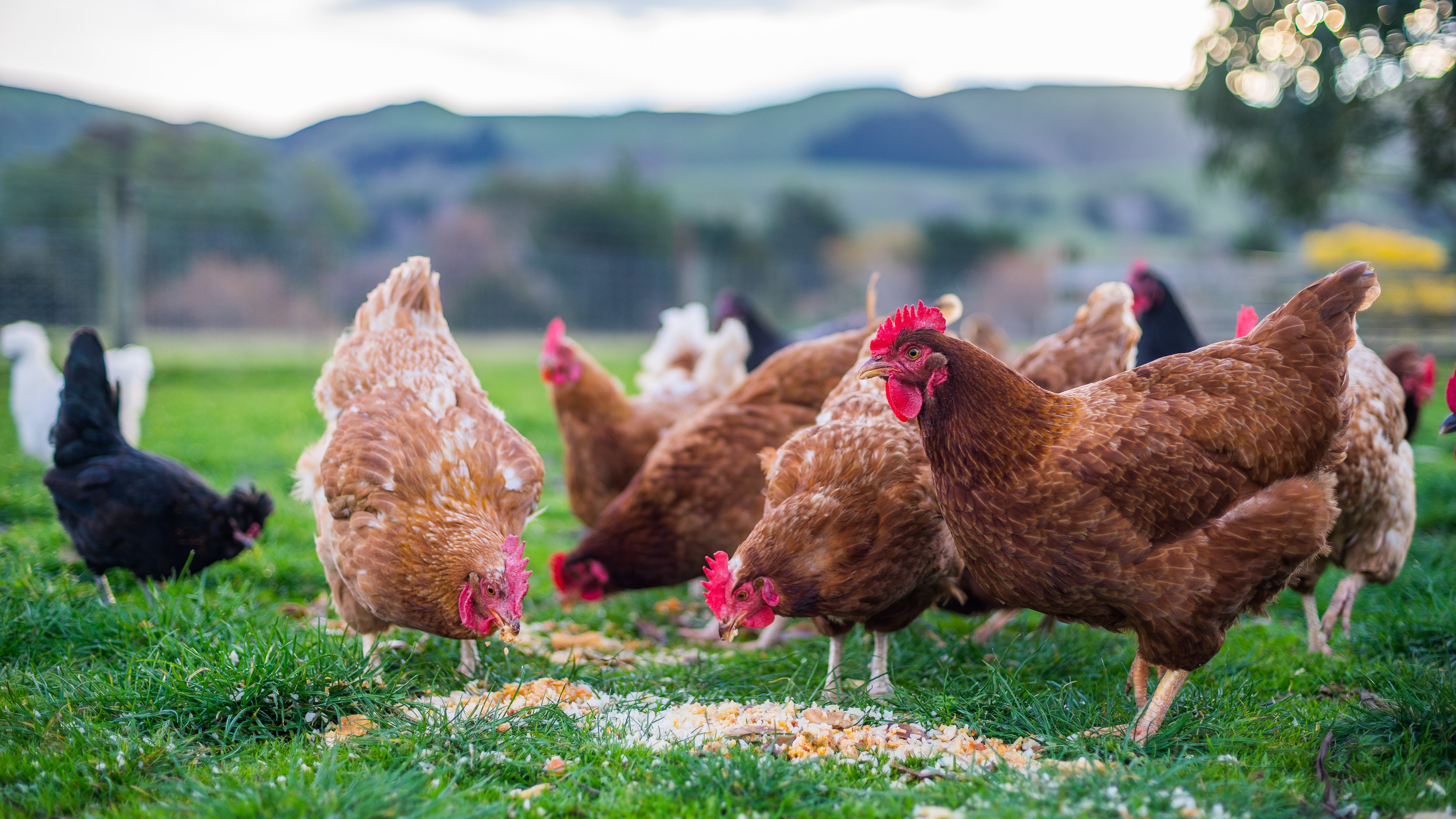Respiratory Disease in Cattle
Introduction:
Pneumonia is among the most important diseases of Irish cattle. Figures from laboratories on the island of Ireland indicate that respiratory disease was the category of disease most commonly found in submitted carcases of cattle aged over 6 months of age. Most of the cattle which had their cause of death recorded as respiratory disease died from what Irish farmers know as “pneumonia”.
The agents most commonly identified from carcases of Irish animals which have died due to bovine respiratory disease are mycoplasmae (bacteria-like “bugs”) and bacteria. However, pneumonia is often caused by several different agents or “bugs”, and these figures may underestimate the importance of viruses as the initial cause of infections. In some cases, by the time an animal dies the bacteria and mycoplasmae, which may only be secondary pathogens, have proliferated to such a degree that the viruses which initially caused the infection are undetectable. Apart from the disease agents mentioned above, lungworm (hoose) and fungi (rarely) can also cause pneumonia. Please see the diagrams below.


Important risk factors/predisposing factors for pneumonia:
- Stress (especially housing)
- Inadequate housing/stocking rates.
- Immunosuppression
Clinical signs of pneumonia infection:
- Dullness
- High temperature
- Difficulty in breathing
- Cough
- Inappetance/off food
- Discharge from mouth and nose
Diagnosis of pneumonia infection can be based on:
- Clinical signs (coughing, increased respiratory rate etc )
- History (exposure status and time of year)
- Laboratory tests carried out on blood samples, on swabs of the nose and throat and on the products of bronchoalveolar lavage (also known as lung washes).
- PM examination
(laboratory testing and PM examination may be particularly useful in cases where a farmer is anxious to determine the agent or “bug” causing the pneumonia)
Treatment of pneumonia:
- This is generally based on antimicrobial therapy combined with anti-inflammatory drugs. Your local PVP who has a knowledge of your farm is generally best placed to advise on appropriate treatment options.
Control of pneumonia:
- Reduction of stress on animals, avoidance of stressful procedures close to the time of housing, especially for weanlings.
- Provision of appropriate housing and maintaining appropriate stocking rates
- Attention to treatment and prevention of lungworm and BVD
- Good husbandry including ensuring adequate mineral levels and “biestings” intake.
- Vaccination. Your local PVP is usually best placed to advise on an appropriate vaccination plan for your farm.
Useful links:
- DAFM Central Veterinary Research laboratory: further information on cattle pneumonia and establishing the cause.
- Animal Health Ireland: more in depth information on preventing pneumonia in both dairy and suckler calves.






